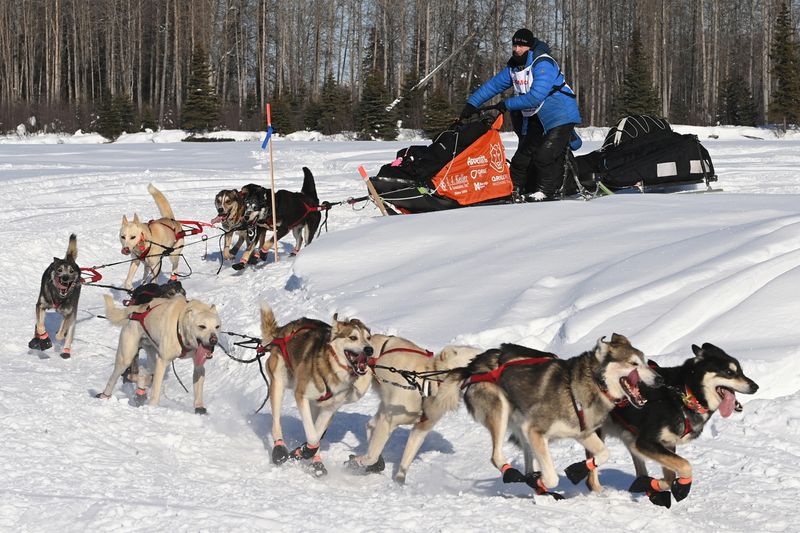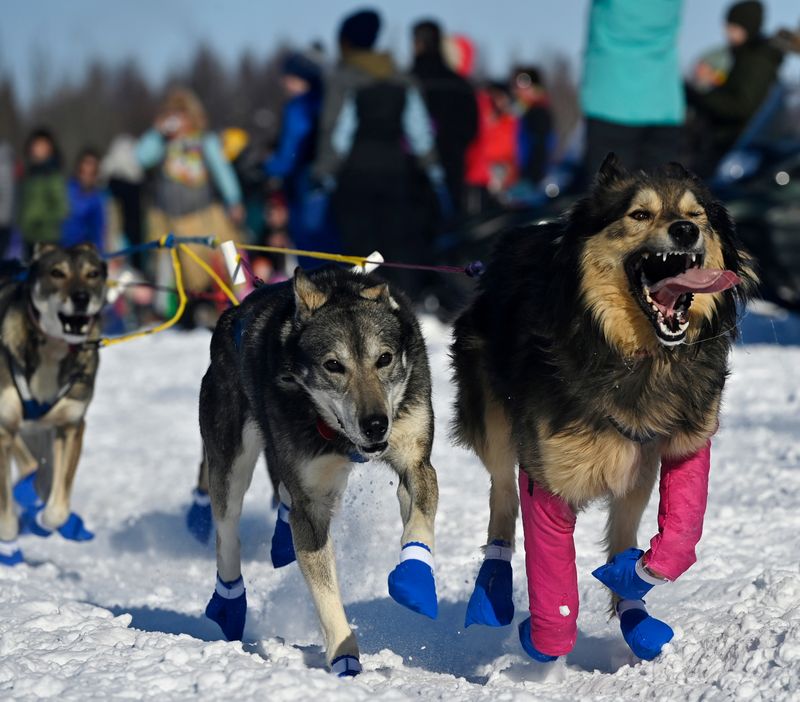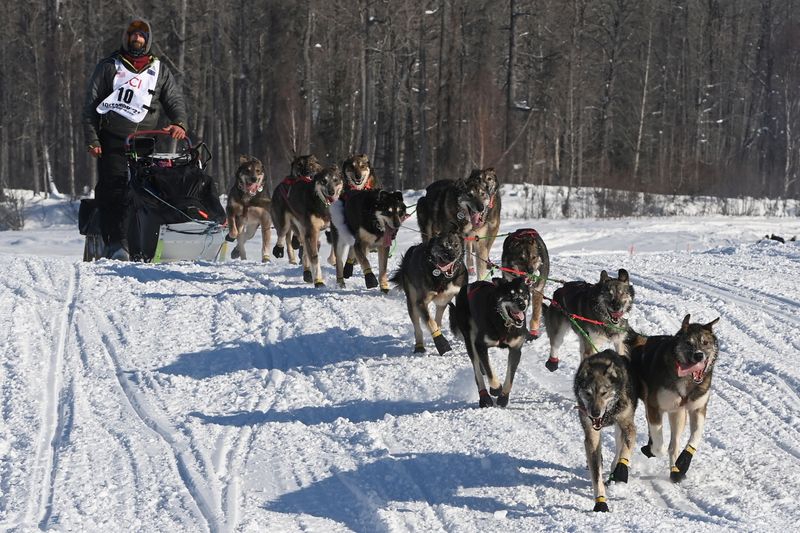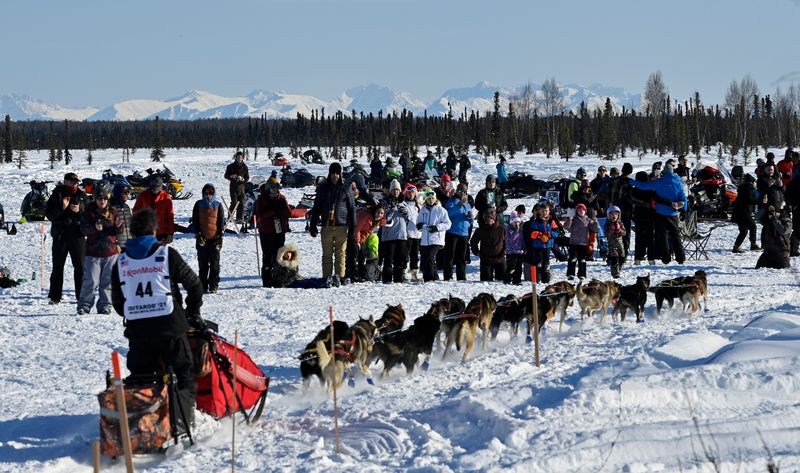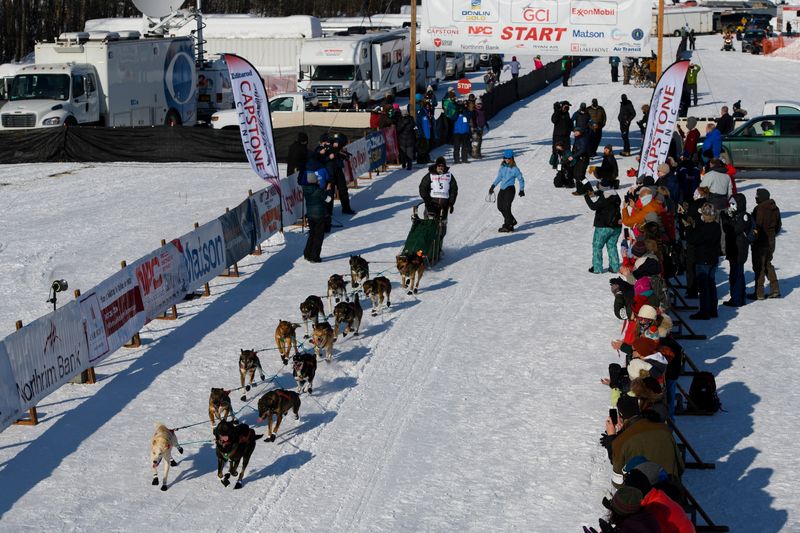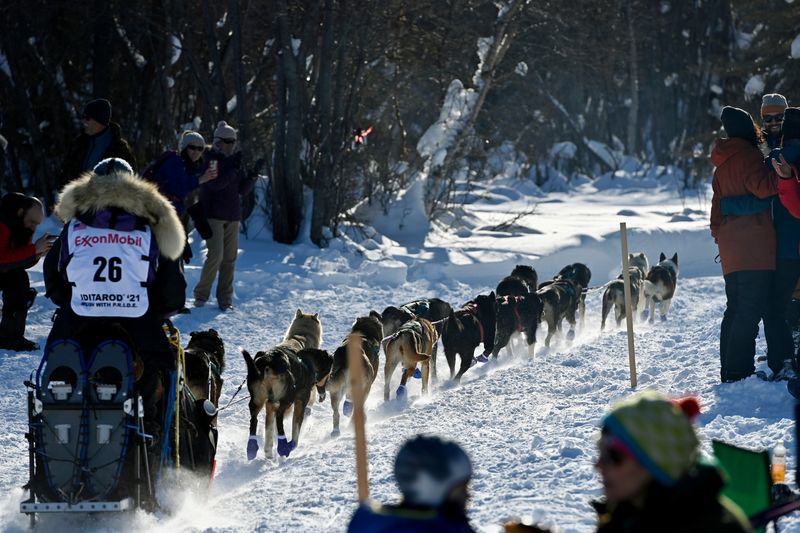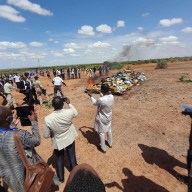ANCHORAGE, Alaska (Reuters) – Forty-six mushers and their teams of huskies dashed off into the Alaska wilderness on Sunday in a socially distanced start to the annual Iditarod Trail Sled Dog Race, embarking on a course drastically altered by the coronavirus pandemic.
The starting gate of the 2021 event was placed off-limits to the usual crowds of cheering spectators, and few if any fans are expected along the abbreviated route for this year’s 49th running of the world’s most famous sled-dog marathon.
Access to the starting area – a secluded spot at the edge of the frozen Deshka River in Willow, Alaska, about 75 miles north of Anchorage – was generally restricted to competitors, essential race personnel and media.
The staggered launch of the race began with Iditarod veteran Aaron Peck of Grand Prairie, Alberta, Canada, followed by rivals charging onto the trail one team at a time every two minutes amid sunny skies and a clamor of barking and yapping.
Victoria Hardwick of Bethel, Alaska, was last out of the chute, rounding out the smallest field of contestants since 1978. A 47th musher on the roster scratched hours earlier due to a non-COVID-19 family health concern, race organizers said.
The weather was relatively balmy by Alaska standards, with temperatures climbing to at least 25 degrees Fahrenheit, the warmest Iditarod start on record, though the mercury was expected to plunge on the trail as the day wore on.
But the biggest change this year was in diverting the finish line far from the Bering Sea gold-rush town of Nome, the usual end point for a race commemorating the legendary diphtheria serum run to Nome by dog sled teams in 1925.
Instead, the 2021 race will run to an uninhabited checkpoint called Iditarod and an abandoned mining settlement named Flat, then turn around for a second leg sending mushers back to Deshka Landing for the finish.
The total distance is about 860 miles, roughly 100 miles shorter than the traditional route to Nome.
“This is kind of a different year. It’s going to be a little odd going on the trail,” 2018 champion Joar Leifseth Ulsom, a native Norwegian who lives full time in Alaska, said on Sunday before the start. He is considered one of this year’s favorites.
VIRUS-ALTERED ROUTE
The coronavirus-altered route is designed to minimize contact with residents of the region.
Even where the trail nears villages, checkpoints are isolated with restricted access. The route skips all the native Athabascan villages along the Yukon River and all the Inupiat villages on the Bering Sea coast.
The mountains of the Alaska Range will pose the greatest challenge to competitors this year, with mushers routed across the range twice in two directions.
This year’s highly competitive field includes Leifseth Ulsom and three other returning champions – four-time winners Dallas Seavey and Martin Buser, and 2019 victor Pete Kaiser.
Also competing are the Iditarod’s top women – Aliy Zirkle, planning to retire after this year’s race, and Jessie Royer, who finished third the past two years.
The Iditarod, as it has every year, faced criticism from animal-rights activists condemning the event as inhumane, putting pressure on race sponsors.
Exxon Mobil has said it will end its longtime sponsorship after this year’s race.
The Iditarod, however, has gained some new sponsors and is drawing revenue from a subscription service sending video directly to fans.
(Reporting by Yereth Rosen in Anchorage, Alaska; Editing by Steve Gorman, Diane Craft and Himani Sarkar)

